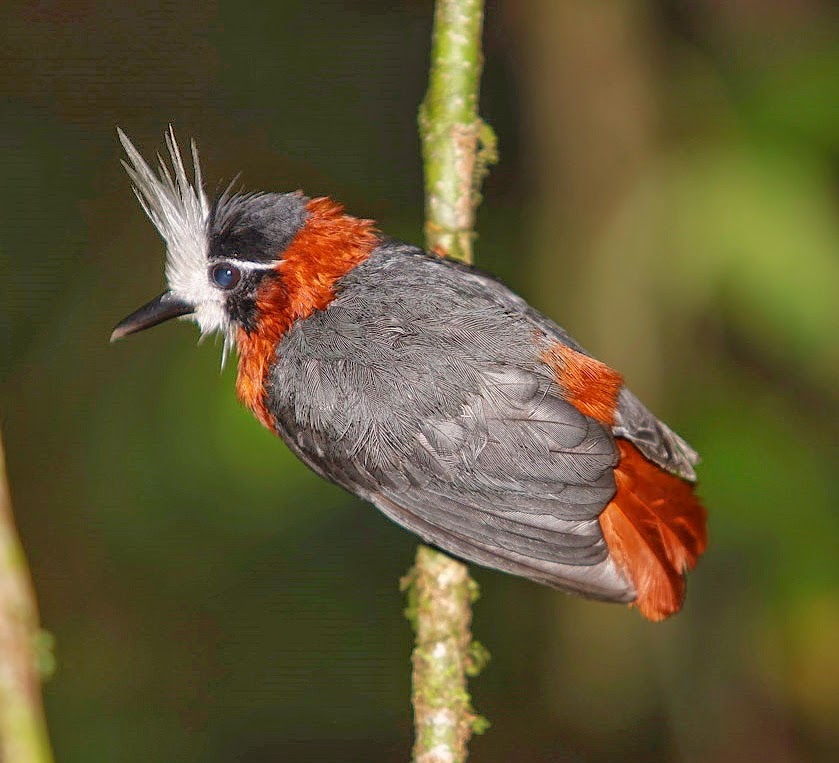 |
| Photo by Vincent Rufray (GEPOG) |
Common name:
white-plumed antbird (en); papa-formiga-de-topete (pt); fourmilier manikup (fr); hormiguero cuerniblanco (es); weißgesicht-ameisenvogel (de)
Taxonomy:
Order Passeriformes
Family Thamnophilidae
Range:
This species is found from southern Venezuela, Colombia and the Guyanas, south to northern Brazil, north of the Amazon river, and along the eastern slopes of the Andes down to southern Peru.
Size:
These birds are 11-14 cm long and weigh 18-20 g.
Habitat:
The white-plumed antbird is found in tropical rainforests, mainly using the understorey of terra firme forests. They are present from sea level up to an altitude of 1.350 m.
Diet:
They follow ant swarms, taking insects and sometimes even small lizards that are flushed by the ants.
Breeding:
White-plumed antbirds nest on a cup made of dead leaves, placed on a small tree in the forest understorey up to 1 m above the ground. The female lays 2 pinkish-white eggs with brown spots, which are incubated by both parents for about 15 days. The chicks are fed by both parents and fledge about 12 days after hatching.
Conservation:IUCN status – LC (Least Concern)
This species has a very large breeding range and is described as fairly common. The white-plumed antbird is suspected to lose 10-11% of suitable habitat within its range over the next 2 decades based on a model of Amazonian deforestation, being therefore suspected to suffer a small decline in the near future.







